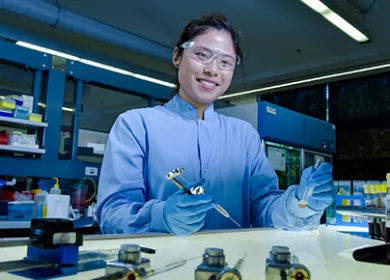Don’t have an account?
Select the donation type you’d like to make
vCJD: how data drives our donation decisions
Understand why it’s now safe for UK donors to donate, after years of restrictions.
For years, the risk of transmitting vCJD (or “mad cow”) disease has meant that people who lived in the UK during the outbreak weren’t able to donate blood in Australia, nor in many other countries.
If you’d like to catch up on the background to vCJD, see our companion article here
Now with the approval of the TGA and state, territory and federal governments, Lifeblood can welcome these people to donate blood. This article explains why the restriction was introduced, and why it is now safe to lift it.
Why the restriction on blood donation?
The restriction on blood donation from UK donors was introduced in Australia in December 2000, to minimise what was, at the time, a theoretical risk of transmitting vCJD though transfusion.
Blood operators around the world responded to prevent potential deaths from vCJD. As well as Australia, France, Spain, Germany, USA, Canada all restricted blood donations from people who had lived in the UK between 1980 and 1996 as at this stage what would occur with the outbreak was highly uncertain.
The UK also restricted blood donations from anyone who had received a transfusion during this time, and sourced all plasma for the manufacture of products such as immunoglobulins from other nations, mainly the USA.
By 2004, in the UK, three people died after probably contracting vCJD from transfusions prior to 2000, when blood processing was different.
Maintaining a safe blood supply depends on layers of controls that work together, including accepting donations only from healthy donors who are at low risk of disease, and testing donated blood for known risks. It’s a delicate balancing act between the risk of disease spread, and the need for blood transfusions.
When a disease has a long incubation period, a person may be infected without realising, and they have the potential to infect others. When, as in the case of vCJD, there is no available test and the disease is fatal and incurable, preventing people at risk from donating blood is our frontline of defence.
For vCJD, with an incubation period of up to several decades from infection to disease, a blood donor could potentially unknowingly infect many people before they’re aware they have the disease.
That’s why, along with many other countries, Lifeblood restricted donations from people who were at risk of developing vCJD, considered as those who had lived in the UK for six months or more during 1980-1996. Despite the main risk factor being consumption of beef products, people who were vegetarians are included in this restriction because they may have been exposed through consumption of processed foods that contained infectious beef by-products.
What’s changed? Why is it safe for Australians who lived in the UK to donate blood now?
We’re now 22 years past the peak of vCJD infections, and although a second wave was a possibility for several reasons, it has not eventuated. Our current tools and systems for monitoring and reporting possible cases are vastly improved and initial estimates of how many people would be infected did not eventuate.
As part of an NHMRC partnership grant, researchers at Lifeblood and the Kirby institute have modelled the risk of transmitting vCJD by transfusion under the current conditions in Australia.
They’ve estimated that the current risk of a blood recipient contracting vCJD if UK donors are included, is less than 1 in 1 billion. In addition there is real world data from the UK and other countries that have demonstrated the peak has passed and there has been no further transfusion-transmissions anywhere in the world from transfusions this century.
Lifeblood, CSL Behring, the TGA and state and federal health authorities have agreed to lift the deferral based on this low risk, and a number of other factors, including:
- The lack of BSE or vCJD cases recorded in Australia
- The lack of new cases of dietary-associated vCJD worldwide since 2016
- A predicted gain of over 18 000 donors and 58 000 extra donations every year.
Lifeblood is looking forward to welcoming thousands of new donors as a result of this decision.


